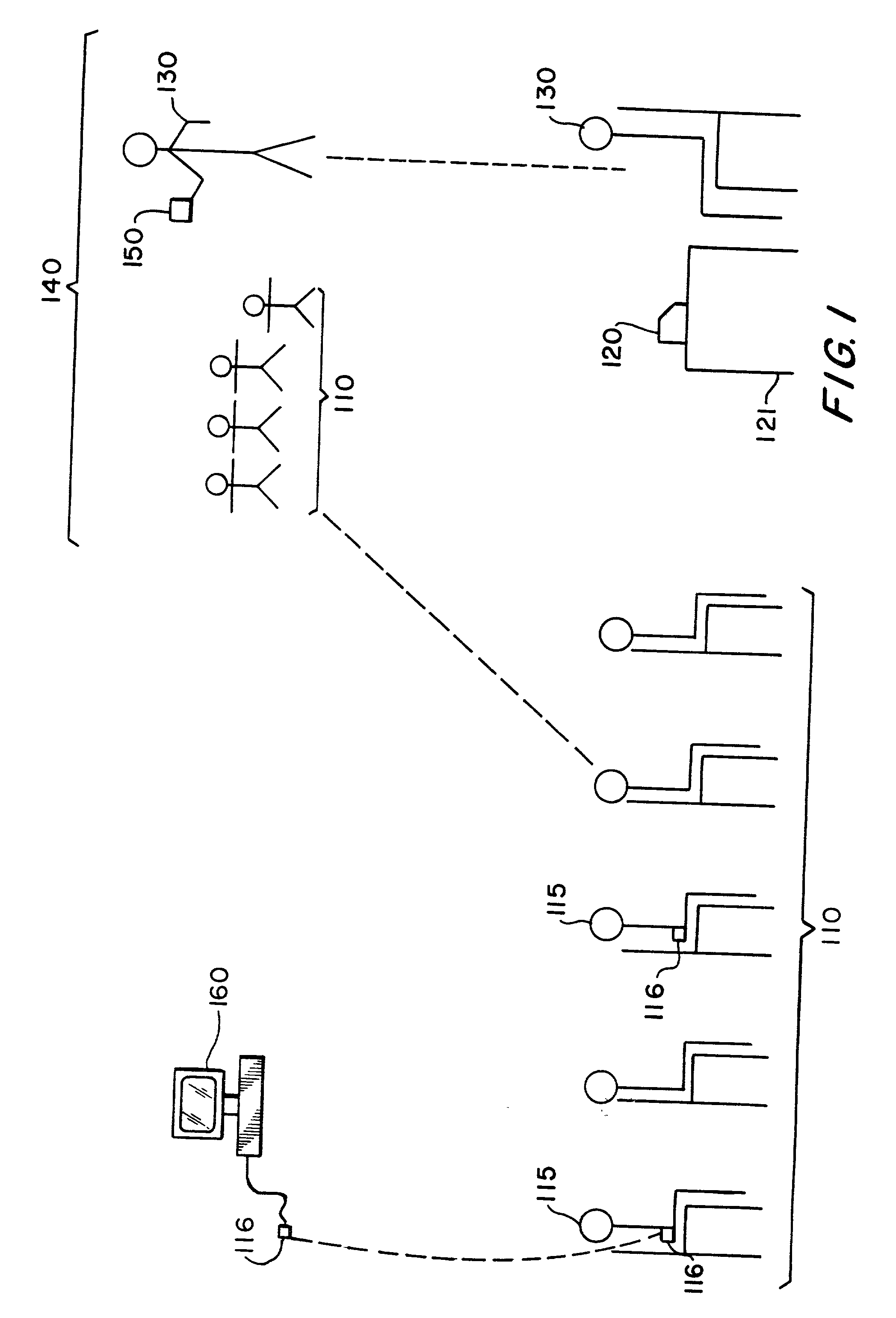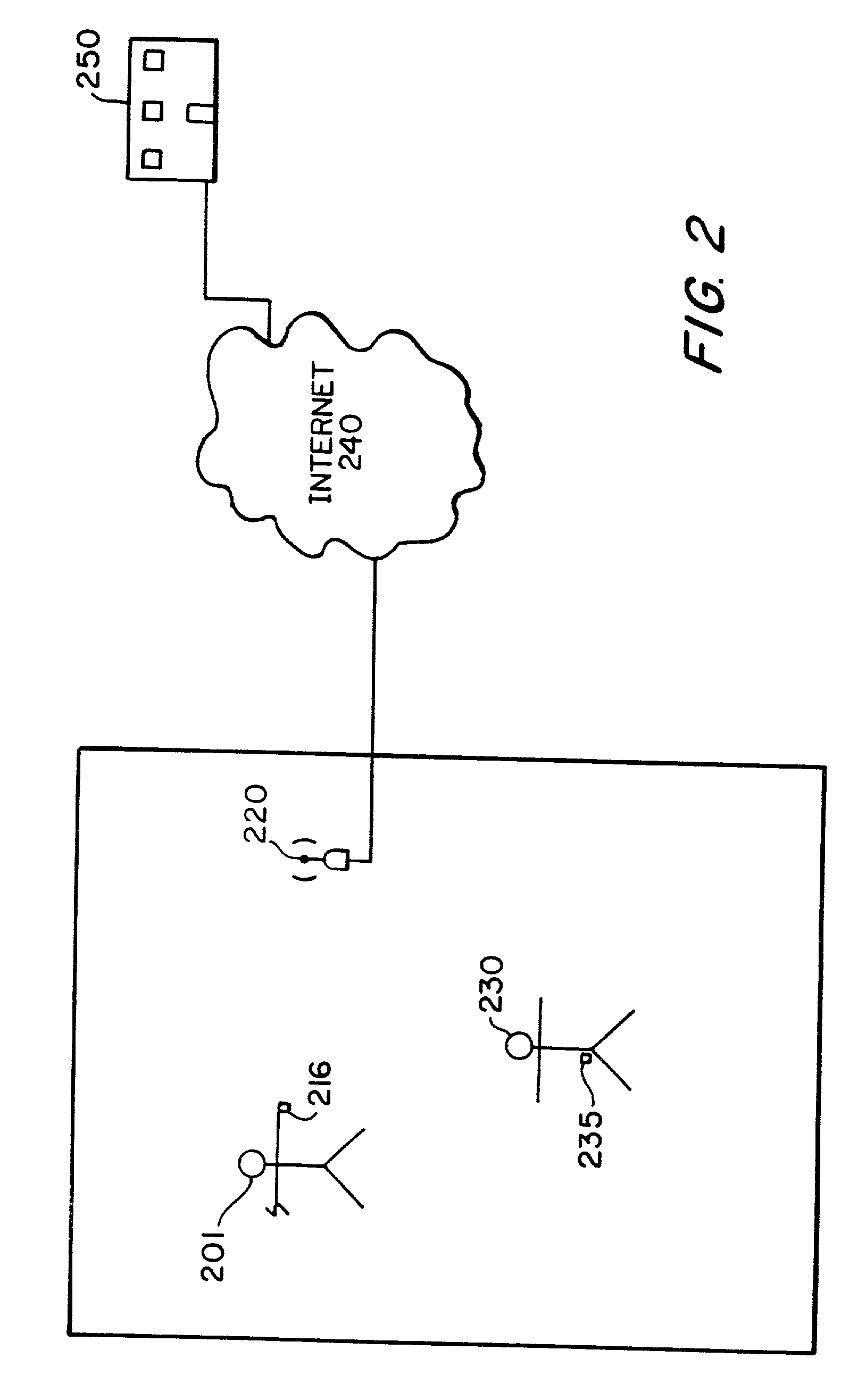System and method of monitoring and modifying human activity-based behavior
a technology of human activity and behavior, applied in the field of system and method of monitoring and modifying human activity-based behavior, can solve the problems of not being commercially successful, lack of safety information concerning the long-term effects of psychostimulant use on children, and heavy set of headphones
- Summary
- Abstract
- Description
- Claims
- Application Information
AI Technical Summary
Benefits of technology
Problems solved by technology
Method used
Image
Examples
Embodiment Construction
[0033] The present invention may be used for both monitoring and modifying activity-based behavior in certain animals, including humans and primates. Therefore, although the presently preferred embodiments below refer to children with ADHD (FIG. 1) and an elderly patient with Alzheimer's Disease (FIG. 2), it should be understood that the present invention may be applied to any condition which expresses itself in behavioral activity with discernible characteristics.
[0034] A preferred embodiment of the system of the present invention is shown in FIG. 1. FIG. 1 shows a classroom with many students 110, some of whom have ADHD 115 and whose behavior is being modified. Attached to the waist of each ADHD student 115 is an activity monitor 116 which is about the size of a conventional pager. Each activity monitor 116 provides vibrotactile feedback to the ADHD student 115 wearing it. Such feedback is presently preferred because it is unnoticeable to other students in close proximity to the A...
PUM
 Login to View More
Login to View More Abstract
Description
Claims
Application Information
 Login to View More
Login to View More - R&D
- Intellectual Property
- Life Sciences
- Materials
- Tech Scout
- Unparalleled Data Quality
- Higher Quality Content
- 60% Fewer Hallucinations
Browse by: Latest US Patents, China's latest patents, Technical Efficacy Thesaurus, Application Domain, Technology Topic, Popular Technical Reports.
© 2025 PatSnap. All rights reserved.Legal|Privacy policy|Modern Slavery Act Transparency Statement|Sitemap|About US| Contact US: help@patsnap.com



